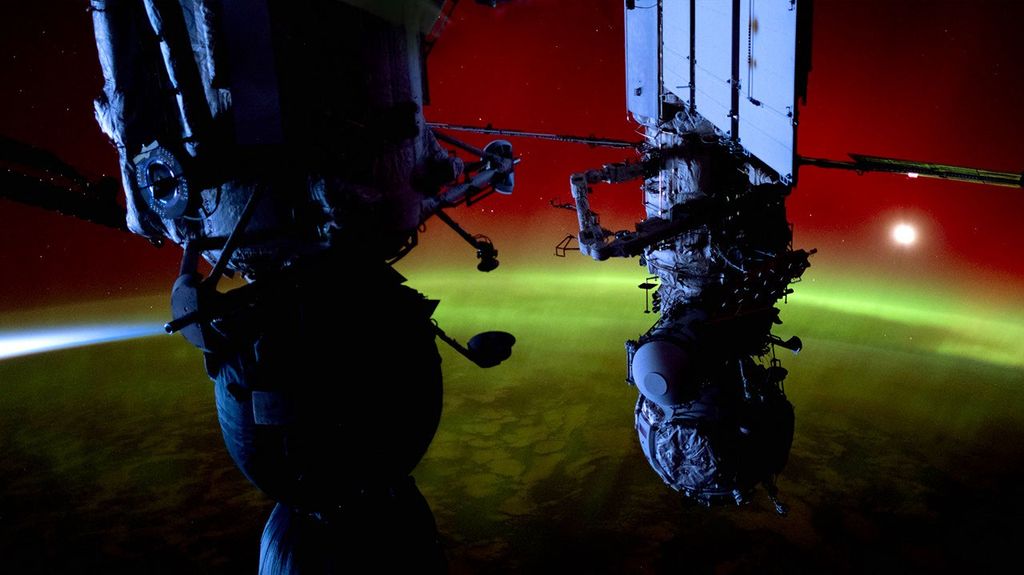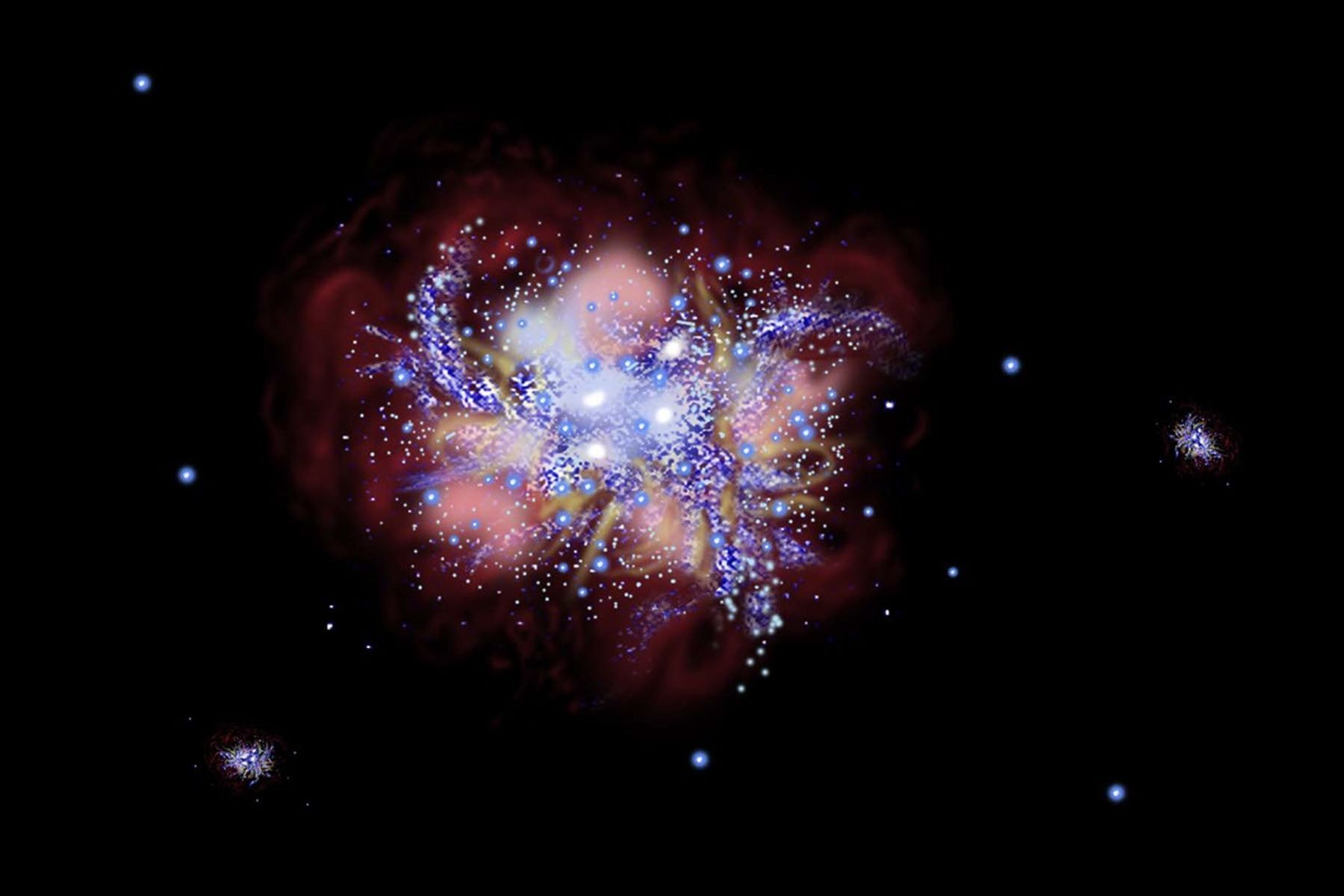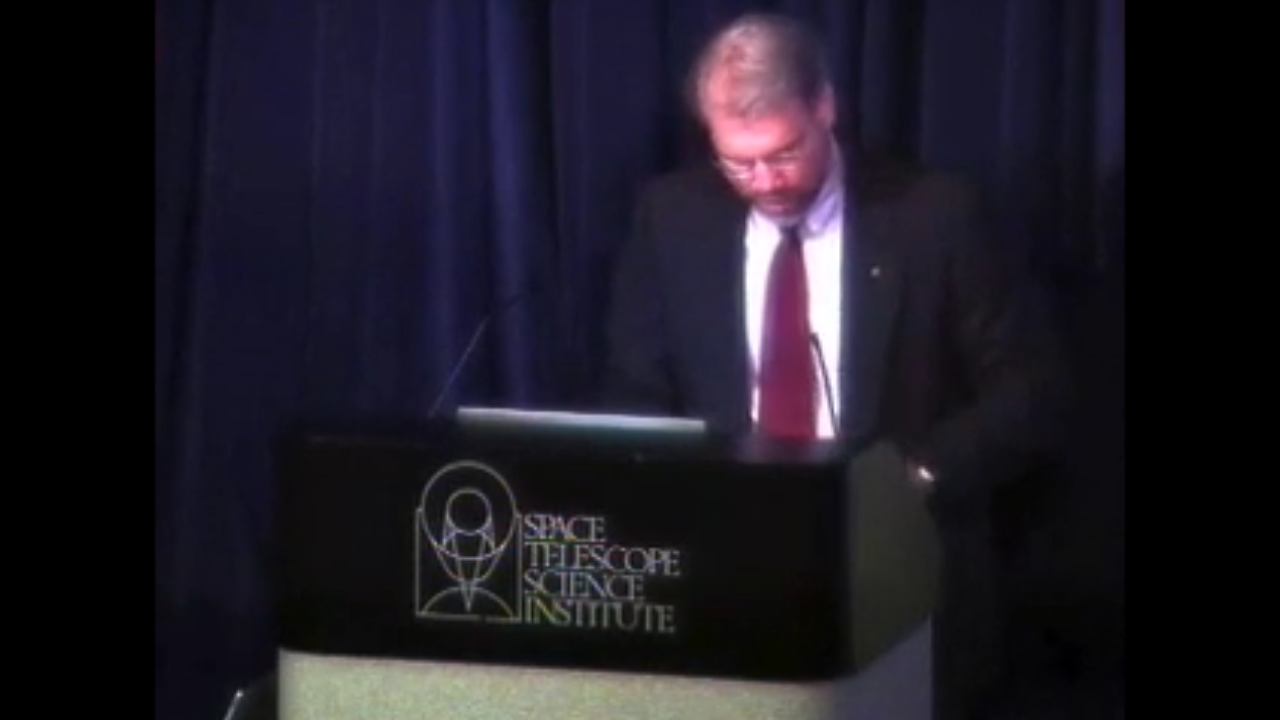1 min read
Hubble and Keck Team Up to Find the Farthest Known Galaxy

Galaxy cluster Abell 2218 is acting as a powerful lens, magnifying all galaxies lying behind the cluster core. The lensed galaxies are all stretched along the cluster's center and some of them are multiply imaged. Those multiple images usually appear as a pair of images with a third - generally fainter - counter image, as is the case for the very distant object.
The color of the lensed galaxies is a function of their distances and types. The orange arc is an elliptical galaxy at moderate redshift (z=0.7). The blue arcs are star-forming galaxies at intermediate redshift (z=1-2.5). The encircled very red pair is the newly discovered star-forming galaxy at about redshift 7.
The lensed galaxies are particularly numerous, as we are looking in between two mass clumps, in a saddle region where the magnification is quite large.
About the Object
- R.A. PositionR.A. PositionRight ascension – analogous to longitude – is one component of an object's position.16h 35m 54.73s
- Dec. PositionDec. PositionDeclination – analogous to latitude – is one component of an object's position.66° 12' 38.99"
- ConstellationConstellationOne of 88 recognized regions of the celestial sphere in which the object appears.Draco
- DistanceDistanceThe physical distance from Earth to the astronomical object. Distances within our solar system are usually measured in Astronomical Units (AU). Distances between stars are usually measured in light-years. Interstellar distances can also be measured in parsecs.Distance to Lensed Galaxy: Approximately 13 billion light-years (4 billion parsecs); Distance to Abell 2218: Approximately 2 billion light-years (600 million parsecs)
- DimensionsDimensionsThe physical size of the object or the apparent angle it subtends on the sky.This image is 1.2 arcminutes wide. At this distance to Abell 2218, this is roughly 660,000 light-years (200,000 parsecs).
About the Data
- Data DescriptionData DescriptionProposal: A description of the observations, their scientific justification, and the links to the data available in the science archive.
Science Team: The astronomers who planned the observations and analyzed the data. "PI" refers to the Principal Investigator.This image was created from HST data from the following programs: 9452: J.-P. Kneib (Observatoire Midi-Pyrénées/Caltech), R. Ellis (Caltech), M. Santos (Caltech/Institute of Astronomy), and J. Richard (Observatoire Midi-Pyrénées/Caltech). 8500: A. Fruchter (STScI), C. Christian (STScI), A. Kinney (NASA), A. Fruchter (STScI), S. Baggett (STScI), R. Hook (ST-ECF), Z. Levay (STScI) - InstrumentInstrumentThe science instrument used to produce the data.HST>WFPC2 and HST>ACS/WFC
- Exposure DatesExposure DatesThe date(s) that the telescope made its observations and the total exposure time.January 11 - 13, 2000, Exposure Time: 9.4 hours (WFPC2), and August 13, 2003, Exposure Time: 3.1 hours (ACS)
- FiltersFiltersThe camera filters that were used in the science observations.WFPC2: F450W (Wide B), F606W (Wide V), F814W (I) ACS: F4850LP (z)
- Object NameObject NameA name or catalog number that astronomers use to identify an astronomical object.High Redshift Galaxy in Abell 2218
- Object DescriptionObject DescriptionThe type of astronomical object.Galaxy Cluster, Gravitational Lens
- Release DateFebruary 15, 2004
- Science ReleaseHubble and Keck Team Up to Find Farthest Known Galaxy in Universe
- Credit

Share
Details
Claire Andreoli
NASA’s Goddard Space Flight Center
Greenbelt, Maryland
claire.andreoli@nasa.gov



























